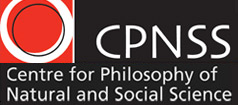How much detail is the right amount of detail for a scientific explanation? David Kinney looks at getting things just right.
Scientific explanations are usually more detailed than ordinary-language explanations of everyday phenomena. For example, it isn’t enough for a scientist to say that that water boils when it’s hot, and freezes when it’s cold. Instead, scientists use temperatures to represent the boiling and freezing points of water at a given atmospheric pressure. In science, details are important; this should be evident to most scientifically literate people.
However, scientific explanations also leave out many details. To illustrate, suppose that doctors are explaining why their patient, a smoker named Jones, developed lung cancer. They could say “Jones developed lung cancer because he is a smoker”, or they could say, “Jones developed lung cancer because he smoked a cigarette at 8pm on 1 June, 1972, and another cigarette at 2pm on 2 June, 1972, …” eventually listing every cigarette that Jones ever smoked in his life.
It’s easy to see that listing the time and date of every cigarette that Jones ever smoked is not something that scientists would ever do, but other cases are harder to pin down. Of the myriad possible ways to explain Jones’ lung cancer, here are two reasonable ones:
- Jones developed lung cancer because he is a smoker.
- Jones developed lung cancer because he has smoked x number of cigarettes.
It may be that both explanations are correct, but which one is better? Clearly, we can’t choose the second explanation simply because it is more detailed. If we always did that, we would end up with hyper-detailed explanations that are simply too long to comprehend. We also can’t go with the first explanation just because it is less detailed. If we always did that, we’d end up with overly broad, imprecise explanations.
In a 2012 paper, University of Michigan philosopher Brian Weatherson calls this the “Goldilocks problem” for scientific explanation; we want to include an amount of detail that isn’t too much, isn’t too little, but is just right.
Who Cares?
Why does any of this matter? Well, suppose that you follow most philosophers of science in believing that all phenomena can, in principle, be broken down and described using the language of fundamental physics. If this is true, then there is a sense in which all sciences other than physics omit some details from their explanations of phenomena. These sciences do not make reference to fundamental physical entities like quantum fields, but rather to coarse-grained entities like molecules, organisms, and markets. Thus, it seems that justifying the existence of the special sciences requires an account of why explanations with less detail are sometimes better than explanations with more detail.
I’ve written a paper on this topic, which will appear in the journal Philosophy of Science under the catchy title “On the Explanatory Depth and Pragmatic Value of Coarse-Grained, Probabilistic, Causal Explanations”. In that paper, I argue that the optimal amount of detail for an explanation depends in part on the context in which it’s presented, and on what the audience of the explanation cares about. More specifically, I argue that an explanation has the right amount of detail, relative to the perspective of some person, when it includes all of the information that this person considers to be valuable, and none of the information that they don’t.
Putting a Price on Information
What do I mean by valuable information? To illustrate, consider a life-insurance agent called Smith. Smith does not know Jones, and wants to know whether or not to sell Jones a policy. If she learns that Jones is a smoker, then she won’t sell him the policy, because she will worry that Jones might develop lung cancer. If she learns that Jones isn’t a smoker, then she will sell him the policy. So she would pay some amount of money to learn whether or not Jones smokes; the information is valuable to her.
Should Smith bother spending time or money to obtain details on the number of cigarettes that Jones has smoked? It depends. In general, Smith does not sell life insurance to smokers. However, suppose that if she knew the precise number of cigarettes someone smoked, it might change her mind; she would still sell life insurance to some light smokers. Under these conditions, Smith should pay to learn the amount of cigarettes that Jones has smoked, since the answer she gets might change her behaviour. She should also regard the second explanation of Jones’ lung cancer as better than the first, since it contains valuable details about the number of cigarettes he has smoked.
Alternatively, suppose that Smith never sells life insurance to smokers, regardless of how many cigarettes they have smoked. In this case, information about the amount of cigarettes Jones has smoked is worthless to Smith; no matter what, the information won’t change her behaviour. Under these conditions, Smith will regard the first explanation of Jones’ lung cancer as better than the second.
Thus, I solve the Goldilocks problem by holding that an explanation has the right amount of detail for you just in case it has all the information that you would pay for, and none of the information that you regard as worthless. I present all of this with more mathematical detail in the paper itself, using the formal machinery of decision theory and probability theory. However, the key upshot is as follows. The amount that Smith would pay to learn the number of cigarettes that Jones smokes depends on two things: 1) her beliefs about the relationship between the number of cigarettes Jones smokes and his likelihood of getting lung cancer, and 2) how bad of a result it would be if she sold Jones the life insurance and he ended up getting cancer.
I argue that this pragmatic analysis helps explain why we sometimes prefer special-science explanations to physical ones. When we face chemical, biological, or economic choices, information about the quantum-level details of the relevant systems may not be worth anything to us as agents. Therefore, this information can be left out of our explanatory models.
Not everyone will be happy with my pragmatic approach. In a 2016 paper, NYU philosopher Laura Franklin-Hall says that a distinctly non-pragmatic criterion for determining the appropriate amount of detail to use in an explanation is a kind of “holy grail” for philosophy of science, one “long sought but never found”. Such a criterion would tell us the optimal level of detail for a given explanation independently of our own subjective interests.
As much as I would like to be the hero of some epic medieval quest, I have to confess that I don’t think that this holy grail is worth looking for. Nature determines which theories are true, but there are many different ways of articulating the truth, depending on how much detail we choose to use. These choices will invariably be guided by what we happen to care about, and therefore have an essential pragmatic component.
By David Kinney
David Kinney is a PhD student in Philosophy entering his final year at LSE. His work is in philosophy of science and formal epistemology, focusing on issues of causal explanation.
Further reading
- Good, I. J. (1967). On the principle of total evidence. British Journal for the Philosophy of Science 17(4), 319–321.
- Strevens, Michael (2008). Depth: An Account of Scientific Explanation. Harvard University Press.
- Woodward, James (2003). Making Things Happen: A Theory of Causal Explanation. Oxford University Press.
Featured image: Public Domain





Very interesting thank you. Just been rereading some stuff. esp Lakatos and reading about Newton and Einstein re gravity. I think the ‘smoking or non-smoking’ thing is different from seeking knowledge, which is not payout or not payout, but important in a diifferent way,
But interesting anyway thanks
Hugh, thanks for you interest in the post. You raise a good point, which allows me to clarify an aspect of my argument. You point out, correctly, that sometimes science pursues a more detailed explanation of nature, simply for the sake of learning more about the fundamental structure of the world. This is especially true of “blue sky” research in areas of science that do not have an obvious pragmatic value. I believe that this kind of research is extremely worthwhile.
However, my aim in this post, and the accompanying paper, is to give any account of why, *sometimes*, we seem to prefer coarse-grained to fine-grained explanations of the same phenomenon. My answer is pragmatic. But the question of why we do science in general is much broader than the question of why we sometimes prefer coarse-grained explanations to fine-grained explanations. Thus, I leave plenty of room for scientific inquiry that is not pragmatically motivated.
Hello David many thanks for your reply I have emailed you. Best wishes Hugh Peters